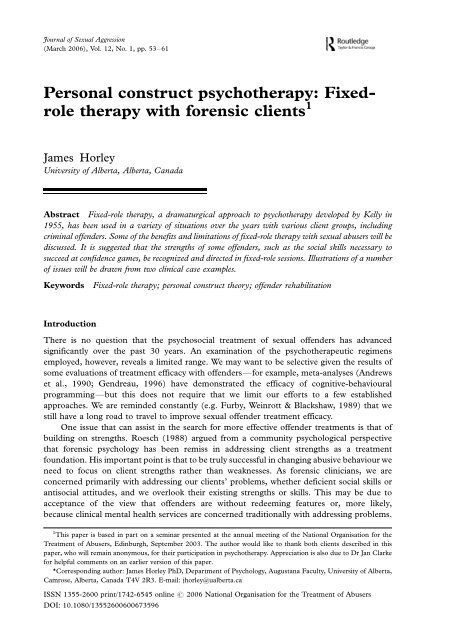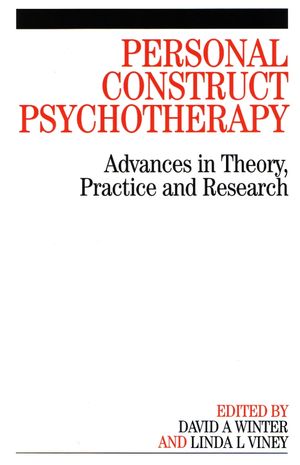

The authors did not state how many reviewers performed the study selection.
#PERSONAL CONSTRUCT THERAPY FULL#
The suitability of studies was assessed by reading the abstract when possible and by obtaining and reading the full report when necessary. Most studies originated from two research groups in Australia and the UK. Repeated measures studies should have sample sizes of 10 or more clients with a loss to follow up of less than five per cent to be eligible for inclusion. In order to be eligible for inclusion, studies should include sufficient information to enable calculation of an effect size.

A wide range of outcomes were included for review details were reported in the review.

Instead, the authors selected one outcome per study according to criteria detailed in the review. Outcomes of interest were not determined a priori. Included studies were of child, adolescent, adult and elderly populations with a wide range of presentations in the clinical and non-clinical settings (mental health, physical health, forensic and occupational settings). Control groups were waiting list, standard care, no intervention, psychodynamic therapy, cognitive behavioural therapy (CBT), support groups plus exposure training, rational emotive therapy, modelling, and self-instructional training. Included studies were of personal construct therapy, interpersonal therapy, fixed-role therapy and goal setting delivered in both group and individual modalities. Control groups of no intervention or another therapeutic or supportive intervention were eligible for inclusion. Between-group or repeated measures studies of personal construct psychotherapy with people experiencing symptoms of a clinical type and severity were eligible for inclusion.


 0 kommentar(er)
0 kommentar(er)
